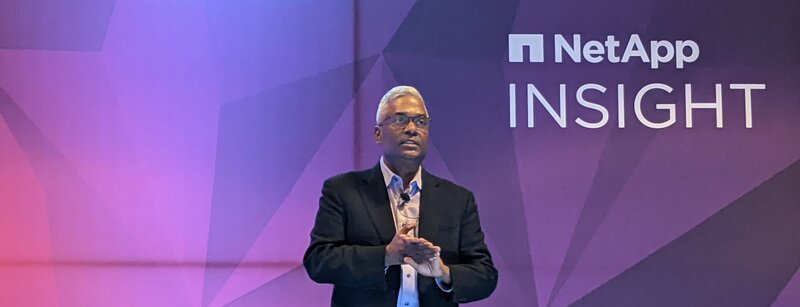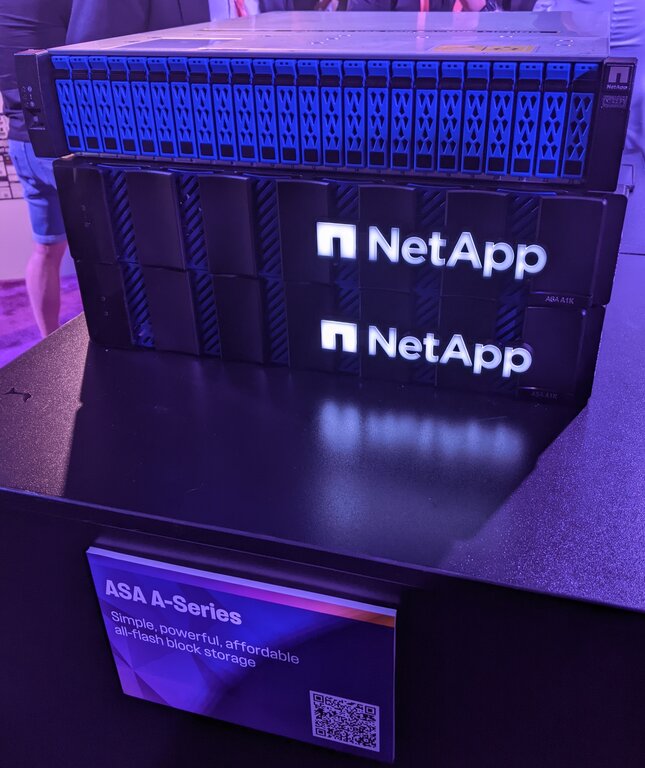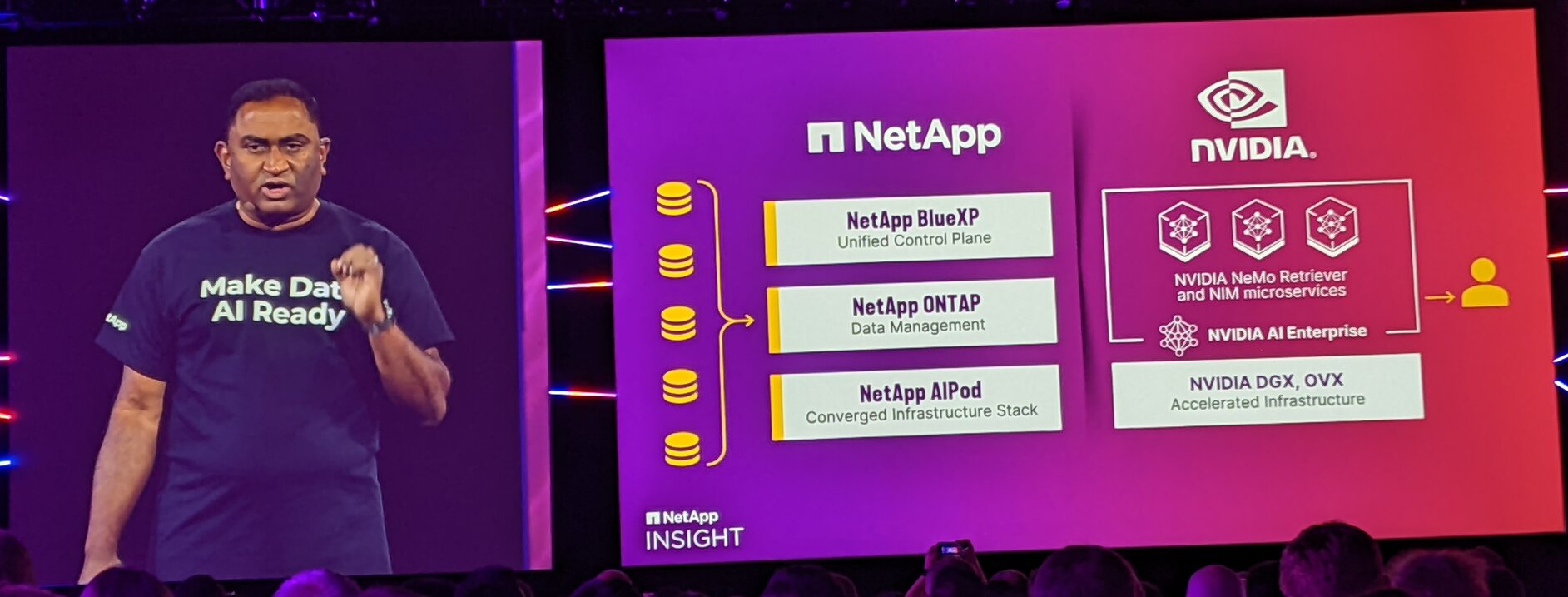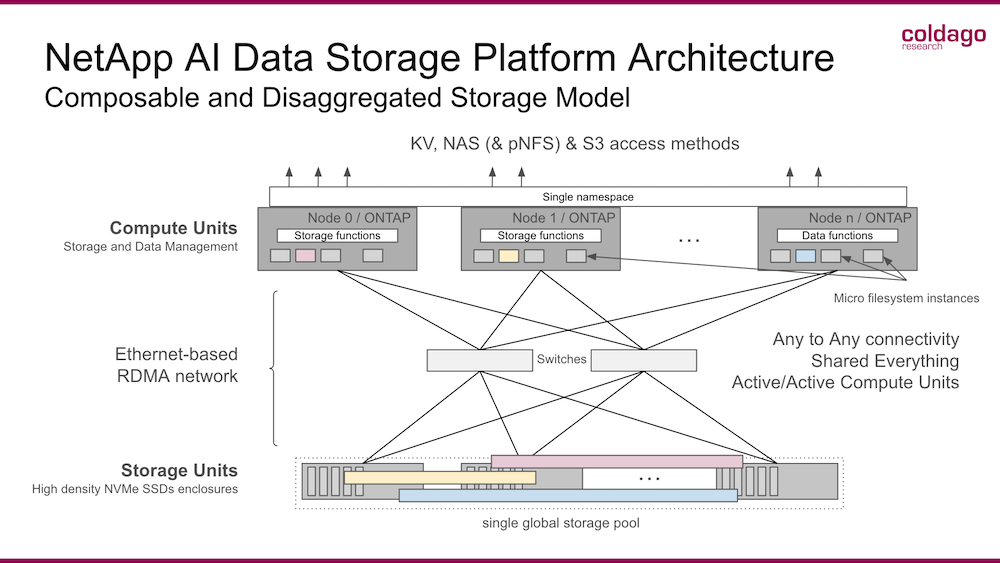Recap of NetApp Insight 2024
Train of products news and key initiatives announcements around AI
By Philippe Nicolas | October 4, 2024 at 2:01 pmNetApp, Inc. just ran its annual user Insight conference in Las Vegas, NV, with approximately 5000 attendees globally. It was the time for the management team to share their vision and unveil some key initiatives fueled by a train of products announcements. CEO George Kurian places its company at the heart of the era of data and intelligence wishing to contribute significantly in the domain as a clear and visible foundation player.

The company insisted on 5 areas: enterprise storage, cyber resiliency, cloud storage and operations and AI.
On the first topic, the product teams promoted block storage with 3 new ASA A-Series models, the A70, A90 and A1K, with 3 arguments: these arrays are simple to deploy, use and maintain, powerful in terms of performance and resiliency and affordable with a very attractive pricing positioning. Gains and benefits are visible in these various dimensions with high IO/s and low latency. Clearly these products are dedicated to demanding use cases to support production and business activities, what we name primary storage.

On the secondary storage side, where solutions support the IT and indirectly the business, 2 new FAS models have been presented, the FAS70 and FAS90, targeting backup, tiering or vaulting projects being designed as hybrid instances.
One of the common messages from NetApp executives was about Ontap, its storage OS supporting all the product line, we should say almost as StorageGRID is a different animal.
On the cloud storage and operations part, we have to remind our audience that the firm is present on GCP, AWS and Azure bridging the historical and classic data center approach with cloud-based models making the experience seamless and almost universal. On Azure, Azure NetApp Files, aka ANF, adds Cool Access for intelligent tiering for cold data evacuated to Azure Blob Storage and also cross-zone replication. On GCP, some updates as well for Cloud NetApp Volumes with services available in all 40 regions, small and large capacity volumes, improved security and optimized cost with tiering again. New features around data protection and cyber resiliency for Cloud Volumes Ontap are delivered without any special fees, it means Autonomous Ransomware Protection, aka ARP, WORM and SnapCenter integration.
On the BlueXP side, the idea is to add key functions such as automation, migration tasks and extend platform coverage such as StorageGRID.
For cyber resiliency, AI-powered Autonomous Ransomware Protection is GA with real-time capabilities, file-based granularity with 99%+ successful detection that trigger some recovery mechanisms coupled with near-CDP or classic snapshots. It is also used by partners for third-parties solution like the recent announced Cleondris ONE. BlueXP now displays information, alerts, integration with SIEMs like Splunk and finally offers a central point of control even on this topic.
And for AI, no surprise it represents a hot topic for all vendors looking for a new el dorado, trying to create additional value with differentiators. Here, NetApp has introduced real progress. The idea that drives NetApp development is to bring AI and thus computing where the data resides and not the reverse.
This area is strategic for the file storage champion, we already wrote that NetApp was absent in AI and even HPC with its own solution. This absence was illustrated by the lack of participation at ISC 2024 and even SC2023 but NetApp will exhibit at SC24 in Atlanta, GA, in November. The company understood that it’s difficult to be credible on a topic when you’re not present at the flagship events of this market segment.
For HPC, it was confirmed, they continue to rely on key partners such as ThinkParQ BeeGFS and bundle this with their E-Series block storage line.

For AI, and especially AI storage, the firm identified its lack of dedicated offering. The various announcements in the domain made at Insight confirmed a clear direction and significant investments from the company for the coming years. The vision and associated philosophy relies on 3 layers with infrastructure for AI, robust data engine for AI and intelligent data services for AI.
One element introduced during the product keynote was the global metadata namespace to bridge on-premises and cloud-based – GCP, Azure and AWS – file data instances of course integrated with BlueXP. We already saw similar things for key players who promoted actively such services.

The data engine is a set of various key components that help to design and boost an AI data pipeline connected to various data sources supporting data classifiers, vector databases and Gen AI applications and LLMs.
On the architecture side, NetApp is waiting for the certification of the Nvidia SuperPOD coupled with the AFF A90 model.
This is also at this level that the AI infrastructure solution will offer soon a disaggregated and composable architecture decoupling controllers from NVMe SSDs enclosures connected via a fast Ethernet-based RDMA network. This block based model is extended on the file level by pNFS to provide a parallel access mode for NFS. This choice is paramount for the company and honestly it would have been completely orthogonal that the NFS market champion wouldn’t dig in the pNFS direction. This disaggregated approach, any-to-any or shared everything, marks a major milestone for the company. This new design forced also NetApp core team to define a multi filesystem layers with micro file systems instances layered below WAFL. On the access side, as said above, pNFS is chosen to offer parallel access and retrieve data from multiple data servers concurrently.
Click to enlarge
In addition, they extended their Lenovo partnership with AIPod for Nvidia OVX and and also added RAG to FlexPod AI.
Some very interesting directions for NetApp who wishes to play a key role in the coming AI tsunami.
















 Subscribe to our free daily newsletter
Subscribe to our free daily newsletter

